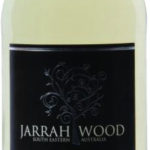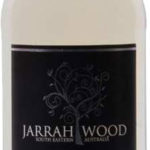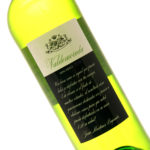Great Alternatives To Asda, Sainsburys or Tesco White Wine Online Deals...
View More White Wines Delivered Under £10 here>> White Wine Offers Between £10 – £20 here>> Excellent Options to Asda, Sainsburys Wine Delivery, Tesco Wine Online.
Top 4 Ways to Know a Good Wine
What makes a wine taste good? Isn’t a good wine simply one you like to drink? Yes but there’s more to it than that. 
Unfortunately, it’s not possible to know by looking at the bottle and reading the notes on the back label if the wine is going to be good. Only a corkscrew, a glass, and your taste buds can do that. But isn’t it enough to say a wine is good if you like it? Choosing a good wine is completely subjective.
How each person defines a good wine is unique to them and their taste buds. Whether you prefer delicate, bold, sweet, tart or even spicy flavours, it is possible to find a wine you adore. The fact that it’s pleasing to you is a matter of personal preference, but determining if the wine is a good one takes looking at various elements to determine its objective quality. And if it turns out to be a good wine and you like it then toast to that!
The good news is good wine is neither expensive nor old. So how do you know what makes for a good bottle of vino? Well, for starters, it’s deep, complex and stays with you long after you’ve tasted it. You’re saying, but there are so many. How do you choose? The general tasting rules of swirl, sniff and sip are a start, but there’s more to learn when determining if a wine is worthy of your taste buds and cash. Here there are 4 simple aspects of a wine to consider when deciding if the wine is of good quality:
1 Smell
The first is the smell. Even before you take a sip, stick your nose in the glass and take a whiff. Does it smell like wine? What do you smell? Honey? Peppers? Grapes? Apple? Oak? Chances are, the more you smell, the better the wine may taste. If so, it’s passed the first test. If however, it smells really bad, it probably is most likely to be corked and therefore, no good. If that’s the case, then pour it down the sink and open another.
The wine’s aroma is one of the biggest factors in how the wine will taste. With your nose over the glass, take a sniff and determine if you like what you smell! The aroma is likely to give away many potential wine faults, so inhaling is a must.
2 Balance
There is a saying when you swirl the wine in your wine glass, does it have nice legs? Circle the glass once or twice to sufficiently swirl the wine. You know those slender lines of liquid that slowly drip down the sides of the glass. Legs mean little when it comes to good wine, but it can give you a clue on its alcohol content.
When a wine is in balance, none of the components of acidity, tannin, alcohol or fruit stands out as the main event.
The second clue to knowing if your wine is good is balance. You may have heard wine experts talking about a balanced wine. But balance is an important aspect of a wine. If the high level of acidity makes your eyes water or the searing levels of tannins feel like you drank wool instead of wine, the wine is not balanced. If however, you notice a nice freshness to the wine, the tannins are supple and proportioned, the fruit is plentiful but not overpowering, and the alcohol is imperceptible. Then your wine has balance.
3 Taste
Go in for the sip. Let the liquid move around your tongue. Do you taste dark cherries, grapefruit? Use your taste buds to figure out how many different flavours you can pick up on. Hint: as long as it’s in balance and isn’t putrid-smelling, the more you can taste the more complex the wine. When all of the flavours stay on your tongue for some time, even better! If the wine’s fruit flavours (think plums, blackberry, cherry, raspberry, citrus, melon, peach) dance across your tongue and the finish lingers you know you’ve got a complex and balanced wine. The first sip of wine can often prove a little too acidic for the mouth, so ensure that you take at least two sips before you make your evaluation. Think about the structure and feel of the wine as well as the taste.
You simply swallow the wine and see how long the flavour lasts on your palate the longer it lingers, the better the wine. Once you’ve swallowed, the flavour drops right off and goes away in a split second, it’s probably not such high quality. But if you can still taste appealing characteristics 2, 3, or 4 seconds after you may be onto something. And when you can still taste the wine after 10 or more seconds, you may have hit a good quality wine indeed!
4 Depth
Next, is the depth of flavour in the wine. This is as simple as thinking about what you’re tasting as you hold the wine in your mouth and swirl it around. The wine will almost certainly taste of fruit but is that all? Can you detect other layers of flavour beyond the fruit? Perhaps a touch of nuts or grapefruit in a white or chocolate or coffee in a red perhaps? This would suggest a multi-faceted wine with several layers of flavour.
Wines with a depth of flavour are a lot of fun and if you are sipping one with dinner, you will notice how the wine changes during the course of the meal. It develops in your glass and more and more aromas and flavours come forward depending on what you are eating. A wine with a depth of flavour is certainly a candidate for good wine.
So next time you want to know if a wine is good, crack open the bottle and consider these 4 factors.




















